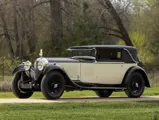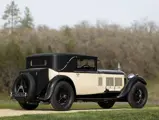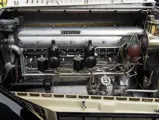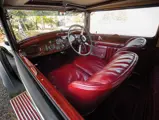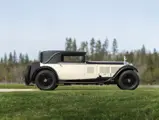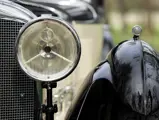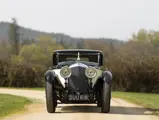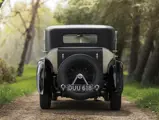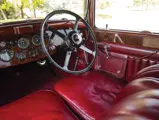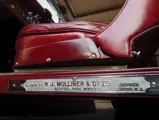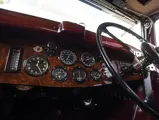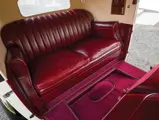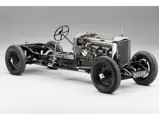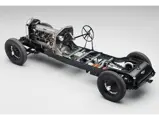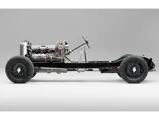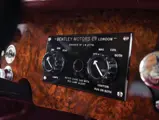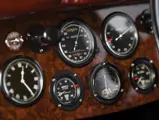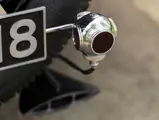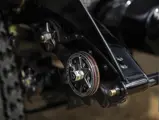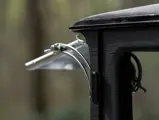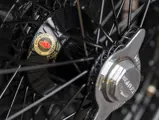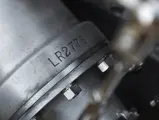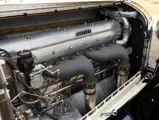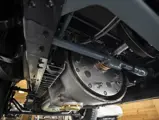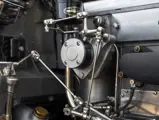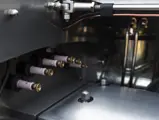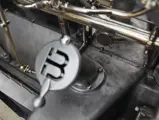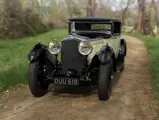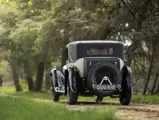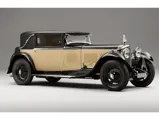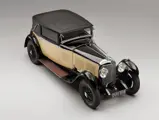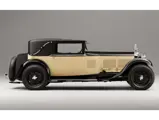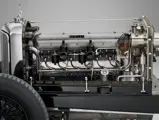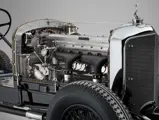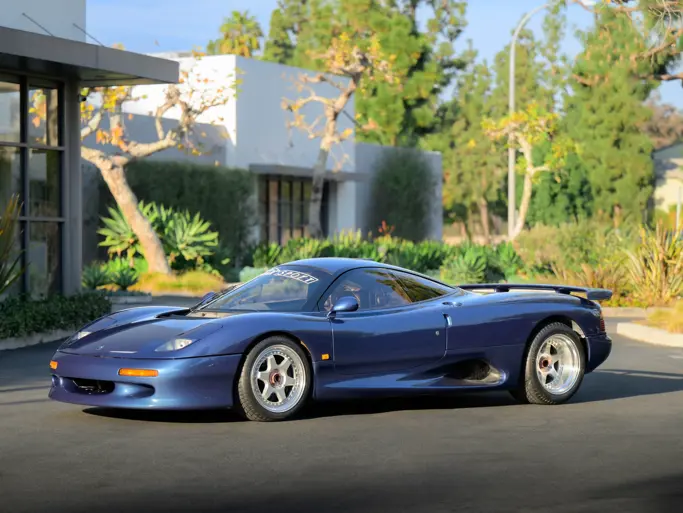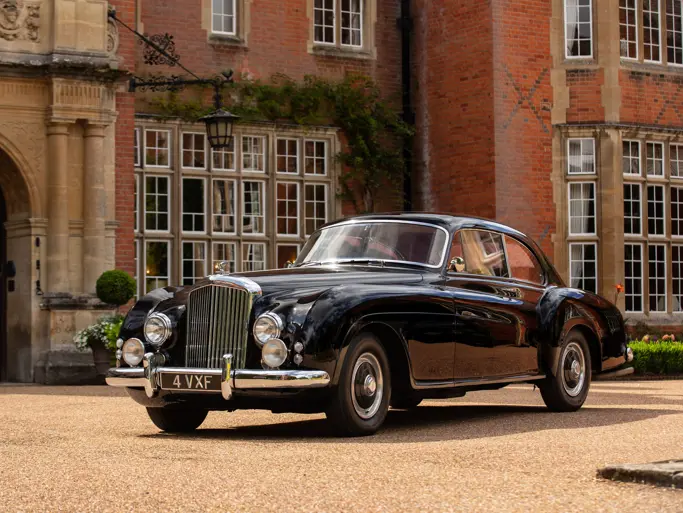Monterey 2019
1930 Bentley 6½-Litre 'Speed Six' Sportsman’s Saloon by H.J. Mulliner
{{lr.item.text}}
$2,600,000 - $3,200,000 USD | Not Sold
 | Monterey, California
| Monterey, California
{{internetCurrentBid}}
{{internetTimeLeft}}

- One of the most extraordinary surviving “W.O.” Bentleys
- Originally delivered to Man Singh II, Maharaja of Jaipur
- Remarkably pure, including original chassis, engine, drivetrain, and bodywork
- Immaculate, painstakingly researched restoration by marque specialists R.C. Moss
- Triple award winner, 2012 Pebble Beach Concours d’Elegance
- Documented by Bentley historian Dr. Clare Hay
THE FINER THINGS - A MAHARAJA’S SPEED SIX
India in the time of the British Raj was a land of unimaginable wealth and splendor, exemplified by the luxurious sporting lives of its numerous territorial leaders. Typical among them was Sawai Man Singh II, Maharaja of Jaipur, who ascended to that position at the age of 10 in 1922. By 1930, at 18, he was a handsome, strongly built young man of imposing bearing and impressive physical strength, the kind of wealthy, worldly young sportsman for whom W.O. Bentley’s automobiles existed.
The car that the Maharaja would eventually acquire, chassis no. LR2778, was a Bentley 6½-Litre ‘Speed Six.’ Chassis LR2778 had been produced for Bentley Motors stock, with an aptly named sportsman’s saloon body produced by H.J. Mulliner to the latest evolution of the French Weymann patent method, with a flexible inner framework skinned in aluminum and a synthetic leather roof covering set off by a polished aluminum beltline. Its engine was a beast of a six, stamped “S” to denote the ‘Speed Six’ features of a single-port block, 4.9 compression ratio, dual SU carburetors, and an Elektron crankcase and camcase, producing, in 1930 specification, 180 hp. The chassis was fitted with the newly designed Bentley & Draper friction shock absorber to the front axle; hydraulic shock absorbers to the rear axle; 13/50 rear axle; and a C-type gearbox. The radiator was finished in chromium, crowned with a Lalique Coq Nain, and a rectangular Hobson telegauge fitted to the instrument panel.
Bentley Motors sold the car in October 1930 to the Maharaja, via Jack Barclay and Duff Morgan Ltd., and it was exported to Jaipur soon thereafter. It was maintained there by Barker, the famous London coachbuilder with a branch in India well-known for servicing royal automobiles.
In 1937 the car was returned to England, registered DUU 618, and sold through Barker’s showroom to Dennis “Denny” Becker that September. The surviving Bentley Service Record notes the installation of a “new old-stock” front axle bed and kingpins in March 1938, replacing components improperly installed in India. Further work continued in 1939, including the installation of a Bluemel steering wheel (still present today), after which the car was laid up for much of World War II’s fuel rationing. After the war it was returned to the road and used by the Becker family for extended European touring in Holland, Germany, Austria, Switzerland, and France, with 17-year-old Simon Becker running it on the autobahn. He inherited the car from his father in 1951 and continued the sporting tradition, running the car regularly and taking it on his honeymoon in 1954, joining the Bentley Drivers’ Club, and participating in numerous BDC trials and events. It was occasionally “rebuilt” over the years, work limited mainly to cosmetic maintenance and a slight alteration of the top, but was always faithfully maintained and, well into the 1970s, used as an everyday car. One day the Beckers parked the car, as they often did, on a London street, and it was appropriated for a fashion shoot; Simon Becker was later astonished to find his car and a pretty girl in an issue of Vogue in his dentist’s waiting room.
By 1974 the Bentley was no longer practical for everyday driving and was sold that year to Ian Findlater, who re-trimmed and refinished the car to the standards of the time later in the decade. Mr. Findlater was a good mechanical caretaker of the car, enjoying driving it in enthusiast events and displaying it at BDC shows and concours. Most prominently, it represented the British automobile in an exhibit at the opening of the “Chunnel” in 1994.
After 30 years of good care, Mr. Findlater sold the Bentley to a German collector in 2004. In 2010 it was acquired by the present owners, who consigned it to the renowned British specialists R.C. Moss of Melchbourne, Bedford, to be restored to its original condition and appearance. To that end, the car was researched and examined thoroughly by both the fastidious Mr. Moss and by renowned Bentley historian Dr. Clare Hay. Similarly, well-preserved original ‘Speed Sixes’ were studied and photographed and Mulliner’s original build processes duplicated whenever possible.
While the car had remained largely intact and unmolested, numerous small details had to be corrected throughout. The original Bentley & Draper hydraulic rear shock absorbers, long ago replaced and now unobtainable, had to be remanufactured to original specifications, as did the wind-lacing for the doors, the proper type of wiring, and, remarkably, even the original formula of linseed-oil-based paint. The original running boards had gone missing but were sourced, restored, and reinstalled. Not only were the seats finished to the proper material and pattern, but they were stuffed with horsehair, as original. In the midst of this, the car’s numbered components were all examined and photographed, and with the exception of the aforementioned front axle replacement, everything was found to be the original pieces installed in 1930.
Dr. Hay covered the restoration in an expansive 106-page history, lavishly illustrated with photographs of the car taken through every step of its life, as well as a complete record of the restoration work, which, she notes, “is to the highest possible standards, perfect in every respect.” Judges agreed.
In its inaugural showing, at completion of the restoration in 2012, the car was judged 2nd in Class and awarded the Montagu of Beaulieu Trophy and the J.B. Nethercutt Trophy for Most Elegant Closed Car at the prestigious Pebble Beach Concours d’Elegance. It was later shown that same year at the Windsor Castle Concours of Elegance in its home country.
There is, quite simply, no better-restored closed ‘Speed Six,’ and almost none that can be compared in their purity and consistently well maintained, caring history with only a handful of enthusiasts. It is the exquisite, perfectly finished emblem of all that is superb in engineering and design from the Classic Era—appropriate, now as then, for a man accustomed to the finer things in life.

